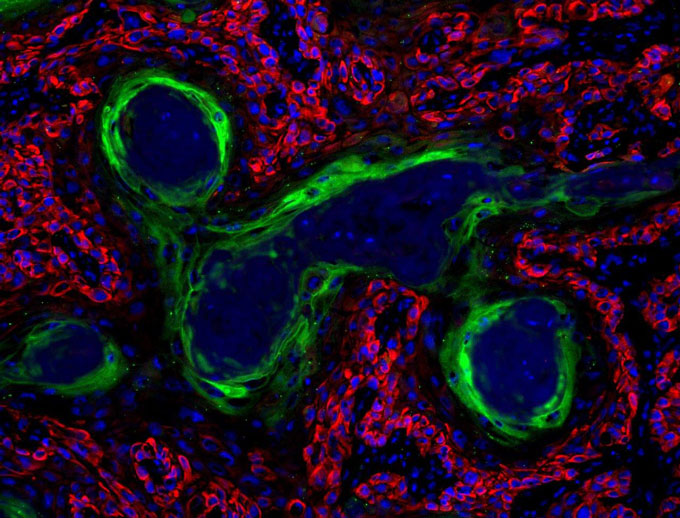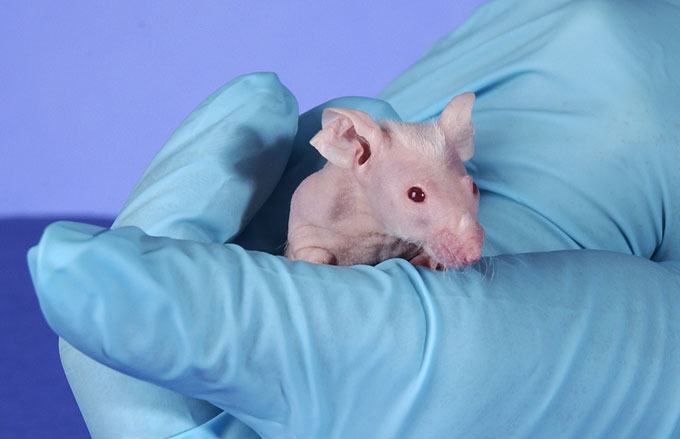This post was originally published on this site
After eight years, a project that tried to reproduce the results of key cancer biology studies has finally concluded. And its findings suggest that like research in the social sciences, cancer research has a replication problem.
Researchers with the Reproducibility Project: Cancer Biology aimed to replicate 193 experiments from 53 top cancer papers published from 2010 to 2012. But only a quarter of those experiments were able to be reproduced, the team reports in two papers published December 7 in eLife.
The researchers couldn’t complete the majority of experiments because the team couldn’t gather enough information from the original papers or their authors about methods used, or obtain the necessary materials needed to attempt replication.
What’s more, of the 50 experiments from 23 papers that were reproduced, effect sizes were, on average, 85 percent lower than those reported in the original experiments. Effect sizes indicate how big the effect found in a study is. For example, two studies might find that a certain chemical kills cancer cells, but the chemical kills 30 percent of cells in one experiment and 80 percent of cells in a different experiment. The first experiment has less than half the effect size seen in the second one.
The team also measured if a replication was successful using five criteria. Four focused on effect sizes, and the fifth looked at whether both the original and replicated experiments had similarly positive or negative results, and if both sets of results were statistically significant. The researchers were able to apply those criteria to 112 tested effects from the experiments they could reproduce. Ultimately, just 46 percent, or 51, met more criteria than they failed, the researchers report.
“The report tells us a lot about the culture and realities of the way cancer biology works, and it’s not a flattering picture at all,” says Jonathan Kimmelman, a bioethicist at McGill University in Montreal. He coauthored a commentary on the project exploring the ethical aspects of the findings.
It’s worrisome if experiments that cannot be reproduced are used to launch clinical trials or drug development efforts, Kimmelman says. If it turns out that the science on which a drug is based is not reliable, “it means that patients are needlessly exposed to drugs that are unsafe and that really don’t even have a shot at making an impact on cancer,” he says.
At the same time, Kimmelman cautions against overinterpreting the findings as suggesting that the current cancer research system is broken. “We actually don’t know how well the system is working,” he says. One of the many questions left unresolved by the project is what an appropriate rate of replication is in cancer research, since replicating all studies perfectly isn’t possible. “That’s a moral question,” he says. “That’s a policy question. That’s not really a scientific question.”
The overarching lessons of the project suggest that substantial inefficiency in preclinical research may be hampering the drug development pipeline later on, says Tim Errington, who led the project. He is the director of research at the Center for Open Science in Charlottesville, Va., which cosponsored the research.
As many as 19 out of 20 cancer drugs that enter clinical trials never receive approval from the U.S. Food and Drug Administration. Sometimes that’s because the drugs lack commercial potential, but more often it is because they do not show the level of safety and effectiveness needed for licensure.

Much of that failure is expected. “We’re humans trying to understand complex disease, we’re never going to get it right,” Errington says. But given the cancer reproducibility project’s findings, perhaps “we should have known that we were failing earlier, or maybe we don’t understand actually what’s causing [an] exciting finding,” he says.
Still, it’s not that failure to replicate means that a study was wrong or that replicating it means that the findings are correct, says Shirley Wang, an epidemiologist at Brigham and Women’s Hospital in Boston and Harvard Medical School. “It just means that you’re able to reproduce,” she says, a point that the reproducibility project also stresses.
Scientists still have to evaluate whether a study’s methods are unbiased and rigorous, says Wang, who was not involved in the project but reviewed its findings. And if the results of original experiments and their replications do differ, it’s a learning opportunity to find out why and the implications, she adds.
Errington and his colleagues have reported on subsets of the cancer reproducibility project’s findings before, but this is the first time that the effort’s entire analysis has been released (SN: 1/18/17).
During the project, the researchers faced a number of obstacles, particularly that none of the original experiments included enough details in their published studies about methods to attempt reproduction. So the reproducibility researchers contacted the studies’ authors for additional information.
While about a quarter of the authors were helpful, another third did not reply to requests for more information or were not otherwise helpful, the project found. For example, one of the experiments that the group was unable to replicate required the use of a mouse model specifically bred for the original experiment. Errington says that the scientists who conducted that work refused to share some of these mice with the reproducibility project, and without those rodents, replication was impossible.

Some researchers were outright hostile to the idea that independent scientists wanted to attempt to replicate their work, Errington says. That attitude is a product of a research culture that values innovation over replication, and that prizes the academic publish-or-perish system over cooperation and data sharing, says Brian Nosek, executive director at the Center for Open Science and a coauthor on both studies.
Some scientists may feel threatened by replication because it is uncommon. “If replication is normal and routine, people wouldn’t see it as a threat,” Nosek says. But replication may also feel intimidating because scientists’ livelihoods and even identities are often so deeply rooted in their findings, he says. “Publication is the currency of advancement, a key reward that turns into chances for funding, chances for a job and chances for keeping that job,” Nosek says. “Replication doesn’t fit neatly into that rewards system.”
Even authors who wanted to help couldn’t always share their data for various reasons, including lost hard drives or intellectual property restrictions or data that only former graduate students had.
Calls from some experts about science’s “reproducibility crisis” have been growing for years, perhaps most notably in psychology (SN: 8/27/18). Then in 2011 and 2012, pharmaceutical companies Bayer and Amgen reported difficulties in replicating findings from preclinical biomedical research.
But not everyone agrees on solutions, including whether replication of key experiments is actually useful or possible, or even what exactly is wrong with the way science is done or what needs to improve (SN: 1/13/15).
At least one clear, actionable conclusion emerged from the new findings, says Yvette Seger, director of science policy at the Federation of American Societies for Experimental Biology. That’s the need to provide scientists with as much opportunity as possible to explain exactly how they conducted their research.
“Scientists should aspire to include as much information about their experimental methods as possible to ensure understanding about results on the other side,” says Seger, who was not involved in the reproducibility project.
Ultimately, if science is to be a self-correcting discipline, there needs to be plenty of opportunities not only for making mistakes but also for discovering those mistakes, including by replicating experiments, the project’s researchers say.
“In general, the public understands science is hard, and I think the public also understands that science is going to make errors,” Nosek says. “The concern is and should be, is science efficient at catching its errors?” The cancer project’s findings don’t necessarily answer that question, but they do highlight the challenges of trying to find out.